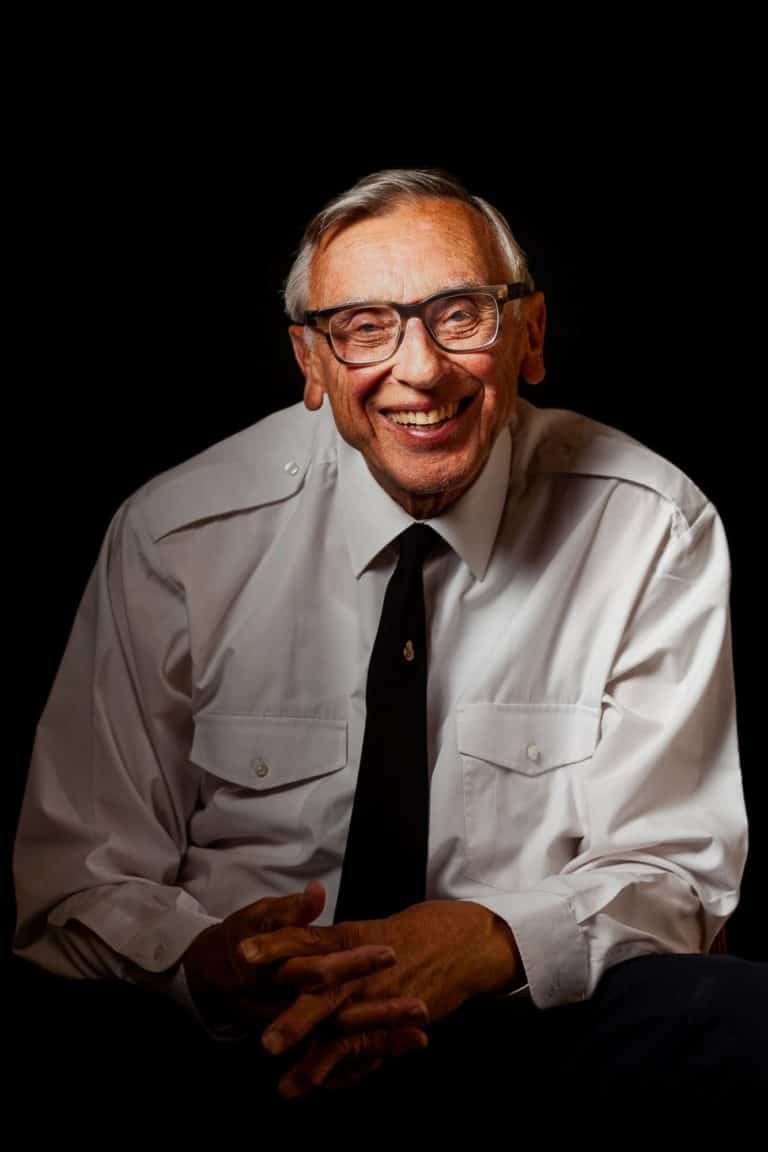Jim Roberts on Saving Lives at Sea
Lisa: Can you talk through the process how you would actually help someone, the equipment that you would use to do a rescue on the cliff?
Yes sure. The equipment has changed over the years. Basically, it is very similar. If you’re going to go down to do a … go over the cliff and bear in mind that Culver, the highest part of Culver is about just over 200 foot, but when you get to the cliff edge it’s less than that ‘cos the Bembridge fault is the highest point. You would tackle that.
First of all you need what we used to call in the days a ‘bag’ which is basically a pair of canvas breeches which are like shorts and you put a leg into each of those and you were attached by always two ropes, that’s not necessarily obvious in the immediately … why you need two ropes but it’s very vital because if one of them breaks you’ve still got another one. They are the ‘lines’, they’re known as cliff lines. They’re attached to what they call a holdfast.
Now, a holdfast has to be a very strong point that you can secure anything to, and that was achieved by having some steel stakes about inch, inch and a half diameter which were actually driven into the surface of the cliff using a big 7lb mallet so it was quite hard work driving these … we would usually put four stakes in for a holdfast and then lash them together and then the two cliff lines would be attached to that.
We’d also have what we called ‘breaststroke’ men as well, not that necessarily had to be a man, either it was a cliff man or as breaststroke man. Just a term that they used to use because when I was running the Coastguard, I think at maximum we had four lady members in the team.
But the breaststroke men or women, their job was to go to the edge of the cliff, see what was going on, watch what was happening with the cliff man or woman as they descended and assist them when they came back over the top of the cliff.
One of the hardest things doing cliff work is when you get just to the top, at the edge of the cliff, is getting that cliff person over the edge because they’ve got to go from … if they’re walking down the cliff, and you’ve got to turn your body through 90 degrees to walk on the top of the cliff. But when you’re doing that with somebody else that you’ve brought up or somebody you’ve brought up in a stretcher, it’s not that easy.
So, the breaststroke people, yeah, had their work cut out, just that last bit, it’s only about five or six feet, that’s where the real hard work comes in.
Obviously, a cliff man has a lot of hard work as well because it’s quite critical going up and down. You can get lumps of chalk falling on you, that happens nearly every time, so of course they all wear cliff helmets to allow that to happen, or it’ll happen to get down there safely shall we say. But it wasn’t unknown for our people to come back and we scrapped the cliff helmets after the rescue because of the dents in it. From time to time you used to get a lot of injury in the shoulder because the rocks would hit them on their shoulders as well. So that is, yeah, it’s the basic set-up.
Over the years, in the early days it was all hand-hauling so you needed at least ten people up on the edge of the cliff to pull the lines, to pull the cliff man and the casualty back up. And ten people can reasonably move two people over the cliff, bearing in mind you’ve got their entire weight so it was really quite hard work. As the years went on though, we did get winches on the front of the vehicles and then we got portable winches we set up and carried by two people which were a great innovation because it took a lot of the hard work out of it.
You wouldn’t have wanted more than three or four people to be rescued because you were too physically exhausted. When that sort of thing happened, you get another team to come in and back you up.
So that’s in brief summary what’s happening at the cliff top. In later years, obviously, earlier years it was all controlled by whistles and a blast on a whistle. But, in later years, that was all controlled by radios.







